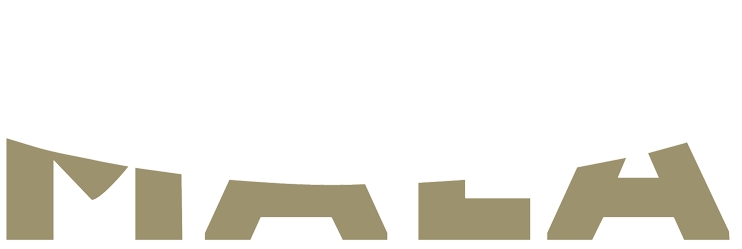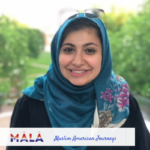Zahra Memon: Bridging the Gap Between Two Worlds: Deaf and Hearing
A recipient of the 2018-2019 MALA Scholarship Program. In accordance with MALA’s mission, this program awards scholarships to individuals demonstrate ambition, integrity, and leadership through the art of storytelling. To learn more about MALA’s Scholarship opportunities, click here.
“Hey, Papa, when is Ahmed coming home?”
“Later,” my father said, his voice uneasy.
“Can I go see him in the hospital?”
“Later, Zahra.”
This was the conversation I had with my father twelve years ago in Urdu. Twelve years ago, our family’s life changed. Ahmed, my youngest sibling, was born with a syndrome none of us had heard of before: CHARGE syndrome. There was no family history of this syndrome, nor was there any recollection of someone else who had this syndrome. My parents, both physicians, had never seen this condition before, even in their home country of Pakistan.
We had no intimation of what this was leading to, but we accepted it. So we asked ourselves, “What does CHARGE syndrome actually do?” CHARGE syndrome, in short, negatively affects three aspects of a child’s body. CHARGE syndrome compromised Ahmed’s hearing, swallowing, and breathing capabilities. Of course, my mother did not know how to deal with this nor did my father, but this did not stop us from doing something about it.
With Ahmed’s condition, we all had to learn a new language. We already spoke two languages at home, Urdu and English, so a third was a little tricky. We had to learn American Sign Language fairly quickly because the baby Ahmed wanted to communicate with us. Language acquisition was a difficult process initially, but it brought our family closer together.
During my sophomore year at Noor-Ul-Iman School, a small Islamic School in Monmouth Junction, New Jersey, a brilliant idea entered my head. What better way to bring awareness to the Deaf community than to start a club for the younger students at my school? I was enthusiastic and ecstatic all at once. This was something I had longed to do. I approached Sana, a friend who also had deaf relatives. Sana and I sat down together and created our proposal to start our school’s very first American Sign Language Club for elementary school children.
Our school principal called us down to her office to present our proposal. My nerves and anxiety kicked in. I thought, “Are we really this close to creating the club?” Sana and I finished presenting; it was up to the teachers and the principal to give the final say. I felt like we were on the game show, Jeopardy, waiting to hear if our final answer was either wrong or right. Soon the teachers in the room all gave a confident “Yes!” This was it. This was the moment. Sana and I sent out flyers to all the elementary school children’s parents via the school email. We were excited and ready. When what we thought was a great idea ended up failing us (We got no response!), we kept going. We put our next strategy into action when we individually went to each elementary classroom and presented the essentials of American Sign Language. The next day, we had 30 students sign up! It’s impressive how one little push can do so much.
Ahmed’s story and his effect on my family’s life have brought me inspiration. After looking at his condition as someone who suffers from CHARGE syndrome, I told myself that life takes its course and that it is up to me to see how I deal with it. Growing up with a deaf sibling was a different experience- anywhere we went, my family and I would serve as my brother’s interpreter, whether it be at the doctor’s office or social events within our community. At one of my brother’s doctor’s appointments, I realized that my brother was not able to directly communicate with his pediatrician due to a language barrier. My mom served as his interpreter, which frustrated my brother immensely. It was this very moment when I learned that the Deaf community was often overlooked and lacked access to direct communication, especially with their healthcare providers. There is a large population of functionally deaf individuals in the United States, many of whom use sign language as their primary mode of communication.
The more I learned about my brother, the stronger my passion grew for American Sign Language, the Deaf community, and medicine. My brother’s hearing loss shaped my identity. In all of my classes, I am the only hijabi among several Caucasian women. As an education major, I integrate my identity and culture into my lesson plans. While my peers thoroughly explain Shakespeare, I produce and teach lessons that discuss the Partition of 1947 in American Sign Language. Over time, my goal became to bring awareness about the Deaf community to my local masjid and Islamic school community. I define myself as a Muslim-American-Pakstani-multilingual woman who serves as an advocate for the Deaf community.


